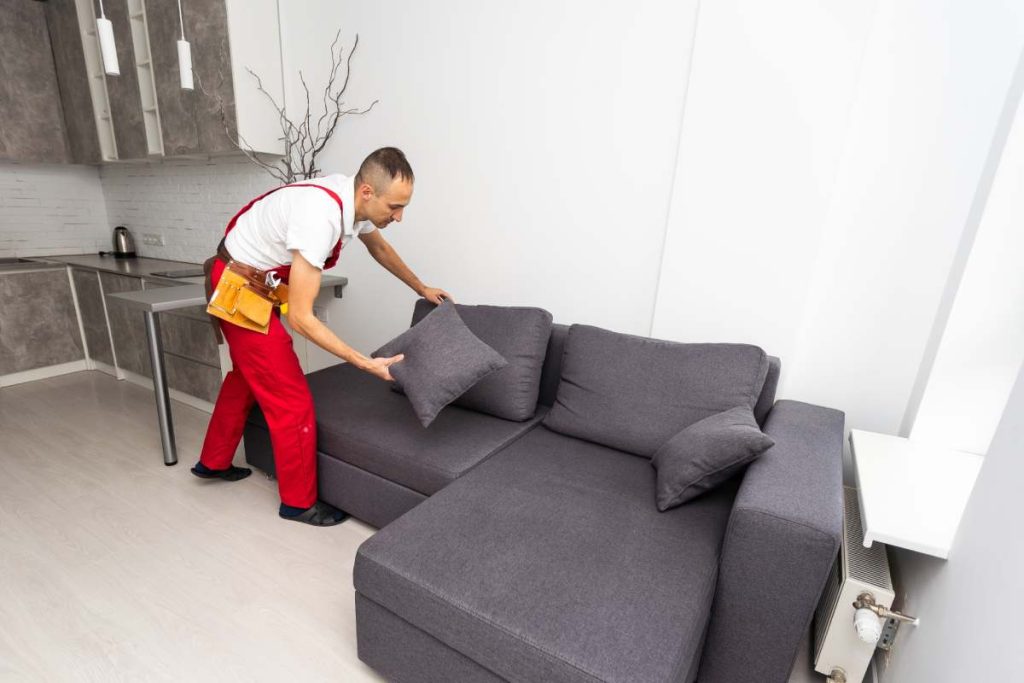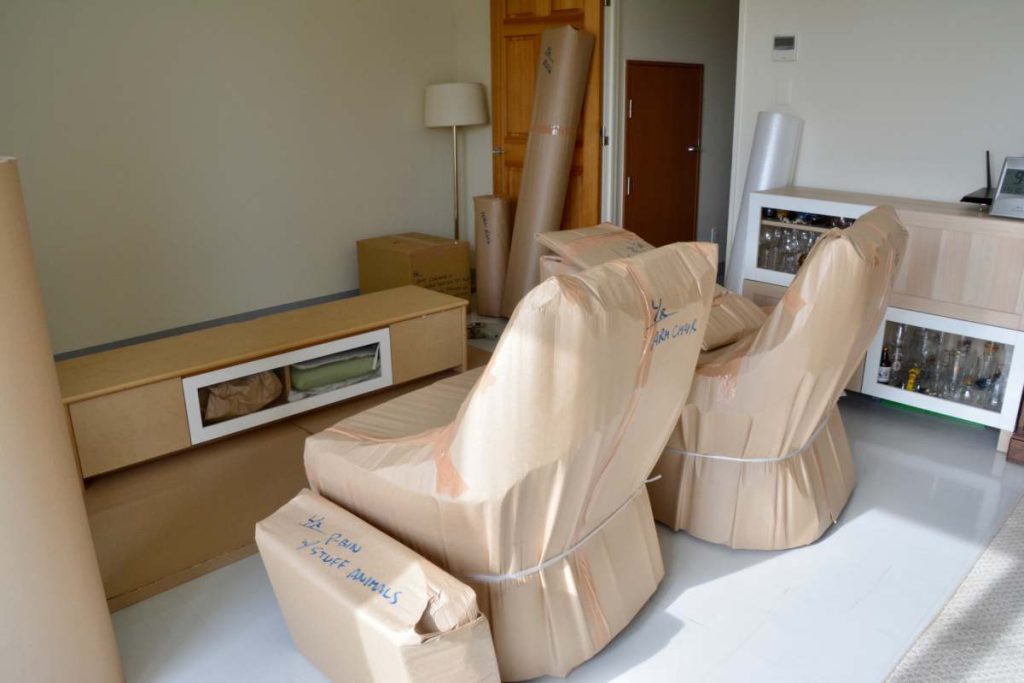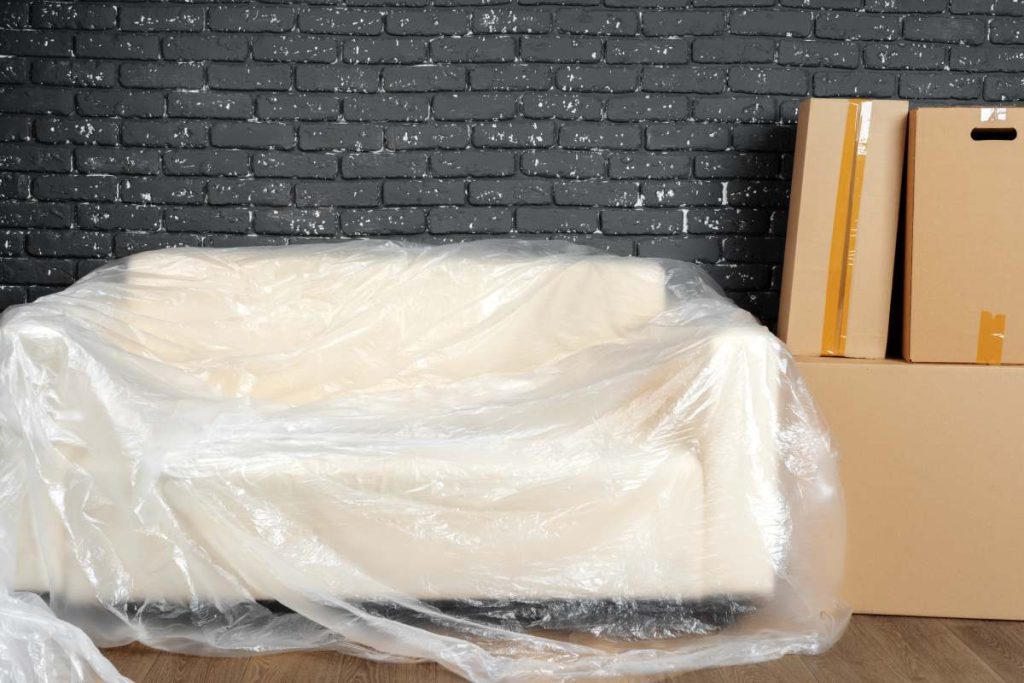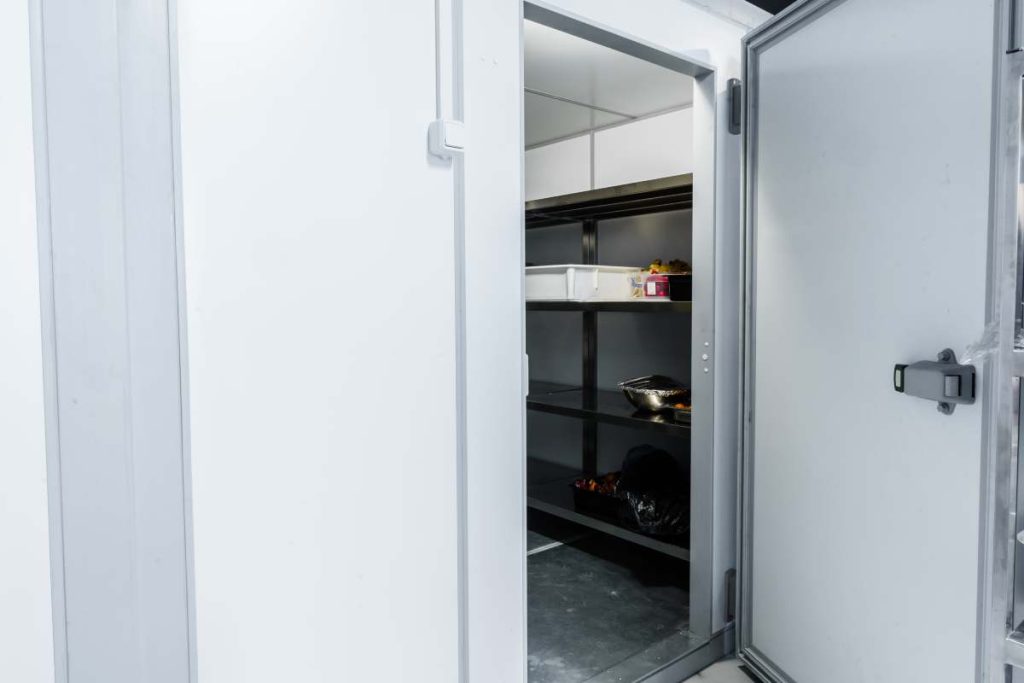Looking for the best way to store your furniture? It can be a bit of a puzzle. Many people turn to storage solutions for various reasons: moving, freeing up space at home, decluttering an office, or safeguarding cherished heirlooms.
To help you out, here are six top-notch tips for furniture storage. These pointers are crucial, especially if you’re planning to store your furniture for an extended period. Stick to these suggestions, and you’ll streamline the storage process while keeping your furniture in tip-top shape!
More how-to:

1. Clean them first
Before stashing your furniture away in storage, it’s essential to give it a thorough cleaning. Our furniture endures a lot, inevitably collecting dirt along the way. Cleaning before storage isn’t just about appearances; it’s also about preserving your pieces. This step is crucial, especially if you’re planning on storing them for an extended period.
Leaving dirt, grime, or any residue on your furniture can lead to stubborn stains that are tough to remove later on. Plus, it can pave the way for mildew, rust, or mould to take hold, causing further damage. Basic cleaning involves using a dry cloth to eliminate dust and a damp cloth for stains.
The cleaning approach will vary depending on the material of your furniture. For wood, opt for a gentle cleaner to avoid damaging the surface. Metal furniture may require steel wool to tackle rust spots before they worsen over time. Fabric pieces should be vacuumed and treated with a color-safe cleaner. Additionally, consider using a furniture-safe pesticide spray to ward off pests that might lurk in the nooks and crannies.

2. Make sure everything is all together
Gathering up all the small bits and bobs can be the most frustrating part of moving. When storing accessories for your larger items, it’s essential to keep everything organized. For instance, if you’re storing a pool table, make sure to label and separate all its accompanying gear. Additionally, breaking down larger items can help maximize space.
If it’s safe to do so, consider disassembling your furniture. Storing furniture in pieces can prevent breakage along joints and seams caused by pressure or gradual warping over time. You don’t necessarily need to take everything apart, but removing legs, drawers, or bed rails can make storage safer and more convenient. Plus, disassembling your furniture will make it much easier to transport to your storage unit.

3. Protect your furniture surfaces properly
Protecting your furniture during long-term storage is crucial, and that involves using the right coverings and preparing the surfaces properly. Covering your furniture prevents dust and debris from settling on it, which could cause stains over time. However, it’s essential to choose coverings wisely, especially for different types of furniture.
For delicate items like glass tabletops or ceramic lamps, bubble cushion wrap provides excellent cushioning. But avoid using tight plastic wrappings for most other furniture types, as they can trap moisture, leading to damage like rot, mould, or cracks.
For wood, upholstery, and metal furniture, opt for coverings that offer protection while allowing air circulation. Specialized drop cloths or blankets made from natural fabrics work well. Ensure the coverings are draped loosely to promote airflow.
Depending on the furniture material, additional precautions may be necessary. Wood furniture, for instance, is sensitive to humidity and moisture fluctuations. Even in climate-controlled storage units, applying furniture polish or linseed oil helps prevent drying out and cracking. Similarly, metal furniture should be polished before storage to prevent oxidation.

4. Look for a climate-control storage unit
Opting for a climate-controlled storage space is your best bet when it comes to safeguarding your furniture. Without climate control, your items are vulnerable to the whims of the weather, particularly in areas like Houston, where high heat and humidity levels can wreak havoc, leading to mould growth and rapid deterioration.
However, not all climate-controlled options are created equal. Some facilities claim to offer climate control but only maintain temperatures around 85 degrees, which may not be sufficient. Beware of places with open-air systems, where walls don’t extend to the ceiling and security is compromised. These setups don’t provide adequate climate control and pose security risks.
When shopping for storage, look for units with dedicated climate control ventilation inside each unit. You can easily identify this feature by stepping into the unit and checking for vents on the ceiling. Additionally, ensure that the unit’s floors are painted and sealed. Exposed concrete or carpet increases the risk of moisture and dirt buildup on your belongings. Few storage properties invest in floor sealing, so it’s essential to inspect this aspect during your visit.

5. Confirm the security of the unit
Ensuring the security of your furniture storage space is paramount. Unfortunately, we’ve heard too many heartbreaking stories of units being broken into, resulting in families losing everything. So, it’s crucial to confirm that wherever you store your furniture, both the property and the units themselves are secure.
Here’s what to look for:
- Locks and Alarms: Make sure your unit has a lock and an alarm system. Verify that the alarm is functional (you can ask the site manager to demonstrate this).
- Surveillance: Opt for a facility with digitally recording coloured cameras. Ensure that recordings are not erased too quickly (some places erase them after just two days).
- Gates: Inquire about the security of the gates.
- Unit Structure: Check that the unit’s walls reach the ceiling, ensuring added security.
Your safety and peace of mind should be your top priority, and your storage provider should share this sentiment. Be thorough in evaluating the security measures in place before making your decision. You can learn more about essential security measures on Keep It Self Storage Solutions.

6. Know how to store your furniture
When it comes to storing your furniture, the final step is placing it in your storage unit. While it may seem straightforward, careful consideration is needed, especially for long-term storage. Here are some tips to ensure your furniture is stored properly:
- Elevate and Avoid Stacking: Whenever possible, elevate your furniture on pallets to allow for airflow around each piece. Avoid stacking items on top of your furniture to prevent warping.
- Leave Space: Ensure there’s plenty of space around each item to prevent humidity from getting trapped. Prop up your furniture carefully to prevent scratching, leaving at least two inches of free space on all sides.
- Efficient Packing: Take a cue from professional movers and pack your storage unit like a pro. Consider storing items like couches on their sides to save space. Ask for an aisle to be created for easy access to your belongings.
Using a professional mover or storage expert like Keep It self-storage can be a game-changer in maximizing your storage space efficiently. Don’t hesitate to seek help to ensure your furniture is stored safely and effectively!
Final thought
Storing furniture is more than just stashing it away in an empty space. It’s about being detail-oriented and mindful of different aspects. Stick to the advice given here, and you’ll keep your furniture in top shape, no matter if you’re storing it for a little while or for the long haul. It’s all about the right cleaning, prep work, and smart positioning in your storage space. Every action counts towards protecting the quality of your furniture. So, keep these essential pointers in mind to protect your items the right way.


